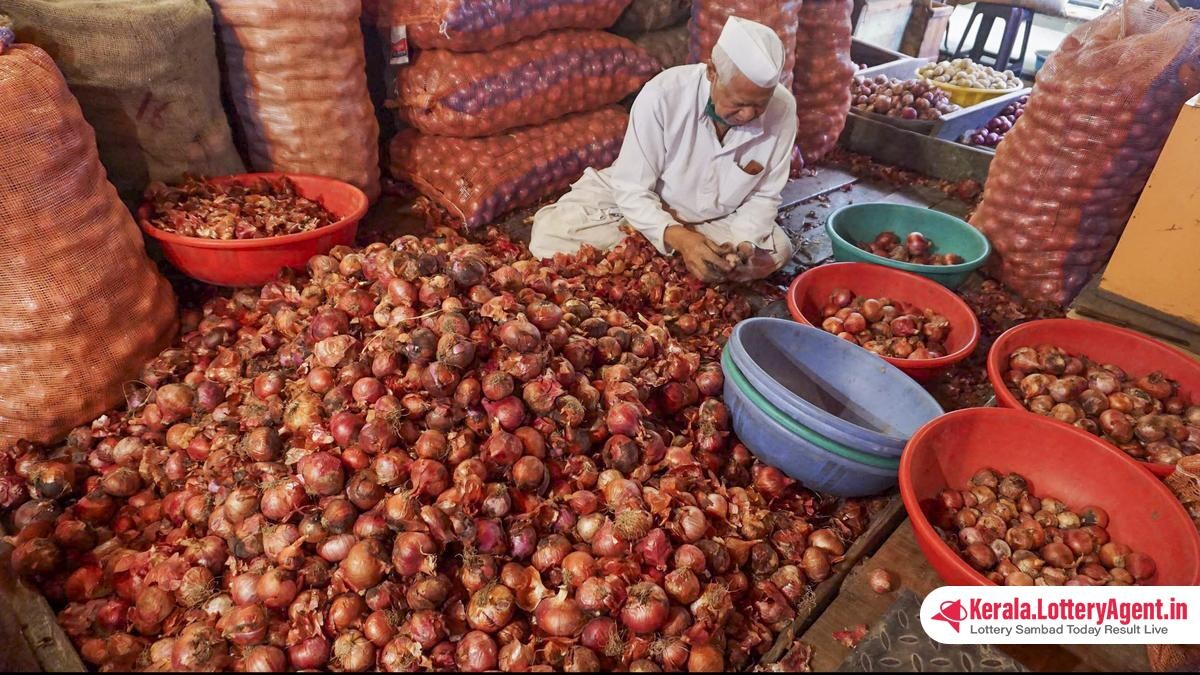
The Indian agriculture sector is currently witnessing a heated debate over the pricing of onion exports to the United Arab Emirates (UAE). As the government of India continues an extended ban on onion exports to avoid a domestic shortfall of this crucial vegetable, exceptions made for certain shipments have raised eyebrows among farmers and traders. Alarm has been raised over the rock-bottom prices at which these onions are being sold to the UAE, juxtaposed against the steep prices in the international market.
Indian farmers, already under considerable financial strain, receive a meager ₹12 to ₹15 per kilogram for onions that are earmarked for export, only to discover that these very onions fetch over ₹120 per kilogram in UAE stores. This discrepancy points towards a significant profit margin for certain importers, a situation exacerbated by the onions’ scarcity on the global market and soaring prices as high as $1500 per tonne.
The background to this situation is the Indian government’s prohibitive stance on onion exports since December. Intending to keep an adequate supply within the country and prevent price hikes, the government instituted an indefinite ban on the export of onions. Nonetheless, it left a loophole open for exports, responding to special diplomatic requests from countries including the UAE.
Earlier in March, the Indian Union government sanctioned the exportation of 14,400 metric tonnes of onions to the UAE, maintaining a quarterly ceiling of 3,600 MT. Following this, in a more recent move, an additional 10,000 MT of onions was approved for export to the UAE, in excess of the previously established quota. Notably, global onion prices have been hovering around the $300-400 per tonne mark, but due to the recent bans by leading producers like India, Pakistan, and Egypt, the rates have spiked.
Despite these soaring prices, Indian exporters claim that the recent consignments to the UAE have been dispatched at approximately $500 to $550 per tonne, a rate significantly below the global pricing. Losses tallied by exporters run into hundreds of crores, with the expectation of further financial hits if the same trend continues with upcoming shipments.
The responsibility for managing these sanctioned exports rests with the National Cooperative Exports Limited (NCEL), a governmental body under the Ministry of Cooperation. Exporters were informed that these transactions were on a government-to-government basis, with quotas set by the importing country for their nominated importers. Interestingly, procurements are being made through an e-tendering process on the Agribazaar portal.
Private traders and supermarket chains in the UAE are reportedly the recipients of these shipments rather than governmental bodies addressing food security. When it comes to setting prices for exports, the typical expectation is that buyers would bid high, yet the current scenario doesn’t seem to reflect that.
Amidst growing concerns, the Horticulture Produce Exporters’ Association has demanded clarity on the exports’ pricing and selection process. An email to NCEL, which also reached the Commerce and Consumer Affairs Ministries, highlighted the pricing disparity. However, inquisitive exporters receive little to no insight as NCEL officials allude to directives from an inter-ministerial committee that determines the price and entities involved in the export process.
With communication lines between exporters and concerned Ministries seemingly gridlocked, horticulture exporters have sought direct answers from higher echelons of the government. During a recent meeting with officials from various Ministries, allegations of a possible nexus between importers and exporters were hinted at, and it was proposed that exports through the NCEL should be more closely aligned with market prices to prevent such disparities.
The discontent amongst farmers and traders is palpable, as stakeholders in the Indian agriculture sector grapple with the ramifications of government-controlled onion exports in a market driven by demand-supply dynamics. With the prospect of continued below-market pricing for Indian onions in international markets, the issue has ripened into a contentious debate that is yet to reach a resolution.













